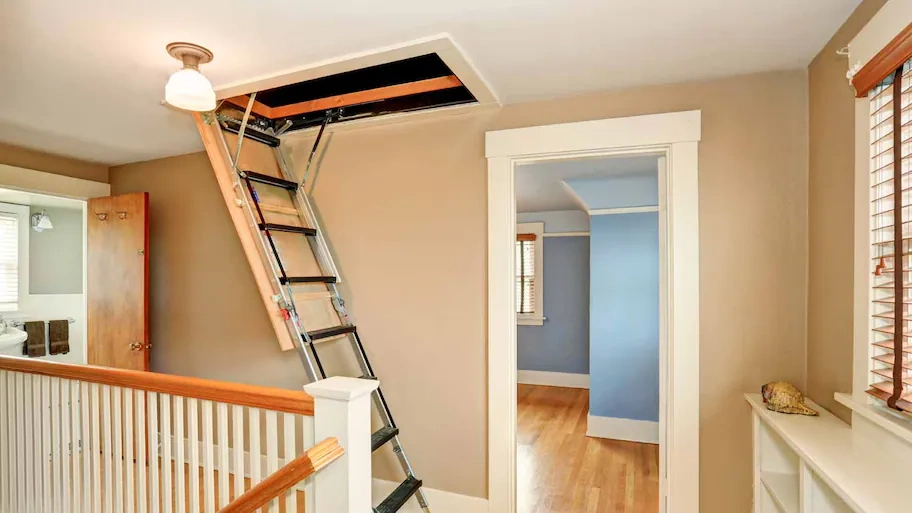Covering your attic opening is an essential home improvement task that serves several purposes, including energy efficiency, safety, and aesthetic appeal. An uncovered or improperly covered attic opening can lead to energy loss, unwanted pests, and an unsightly appearance. This comprehensive guide will walk you through the steps and considerations for effectively covering your attic opening, ensuring your home remains comfortable and secure.
Energy Efficiency:

An uncovered attic opening can be a significant source of heat loss in the winter and heat gain in the summer. By properly covering the opening, you can reduce your energy bills by maintaining a consistent indoor temperature and reducing the workload on your heating and cooling systems.
Safety:
An open attic access can pose safety hazards, especially if it’s located in a frequently used area like a hallway or closet. Covering the opening prevents accidental falls and keeps children and pets safe.
Aesthetic Appeal:
A well-covered attic opening blends seamlessly with your home’s interior, providing a clean and polished look. It also helps keep dust and debris contained within the attic.
Pest Control:
Covering your attic opening helps prevent pests such as rodents and insects from entering your living space. This is particularly important in older homes where the attic may not be well-sealed.
Types of Attic Covers
There are several types of attic covers available, each with its own advantages and installation requirements. Here are some popular options:
Attic Hatch Cover:
An attic hatch cover is a simple and effective solution for covering your attic opening. These covers are typically made of insulated material and fit snugly over the hatch, providing a barrier against heat loss and pests.
Attic Stairway Insulator:
If you have pull-down attic stairs, an attic stairway insulator is an excellent option. These covers are designed to fit over the entire stair assembly, providing insulation and sealing gaps around the edges.
Sliding Door Panel:
A sliding door panel is a more permanent solution for attic openings located in high-traffic areas. These panels can be custom-made to fit your opening and are installed on tracks for easy access.
DIY Plywood Cover:
For those who prefer a cost-effective and customizable solution, a DIY plywood cover is a great option. This involves cutting a piece of plywood to fit the opening and adding insulation and a handle for easy removal.
Step-by-Step Guide to Covering Your Attic Opening
Step 1: Measure the Opening
The first step in covering your attic opening is to measure the dimensions accurately. Use a tape measure to determine the length and width of the opening. If you’re installing a cover for pull-down stairs, measure the stair assembly as well.
Step 2: Choose the Right Cover
Based on your measurements and the type of attic access you have, choose the appropriate cover. Consider factors such as insulation properties, ease of installation, and your budget when making your selection.
Step 3: Gather Your Materials
Once you’ve chosen your cover, gather all the necessary materials and tools. For most attic covers, you’ll need:
- The attic cover or materials to build one
- Insulation (if not included with the cover)
- A utility knife or saw
- Screws or nails
- A drill or hammer
- Weatherstripping (optional)
Step 4: Prepare the Area
Before installing the cover, prepare the area around the attic opening. Clear any debris or obstacles and ensure the edges of the opening are clean and smooth. If necessary, apply weatherstripping around the perimeter of the opening to improve the seal.
Step 5: Install the Cover
For Attic Hatch Covers:
- Place the hatch cover over the opening to ensure it fits properly.
- If the cover comes with adhesive strips, peel off the backing and press the cover firmly into place.
- If screws or nails are required, use a drill or hammer to secure the cover to the surrounding frame.
For Attic Stairway Insulators:
- Open the attic stairs and position the insulator over the stair assembly.
- Ensure the insulator fits snugly around the edges of the opening.
- Secure the insulator according to the manufacturer’s instructions, typically using adhesive strips or Velcro.
For Sliding Door Panels:
- Install the track system according to the manufacturer’s instructions, ensuring it is level and securely attached to the surrounding structure.
- Slide the door panel onto the tracks and test its operation.
- Make any necessary adjustments to ensure a smooth and secure fit.
For DIY Plywood Covers:
- Cut the plywood to match the dimensions of the attic opening, allowing for a slight overlap on all sides.
- Attach a layer of insulation to one side of the plywood using adhesive or staples.
- Add a handle to the insulated side of the plywood for easy removal.
- Place the plywood cover over the opening, ensuring it fits securely.




